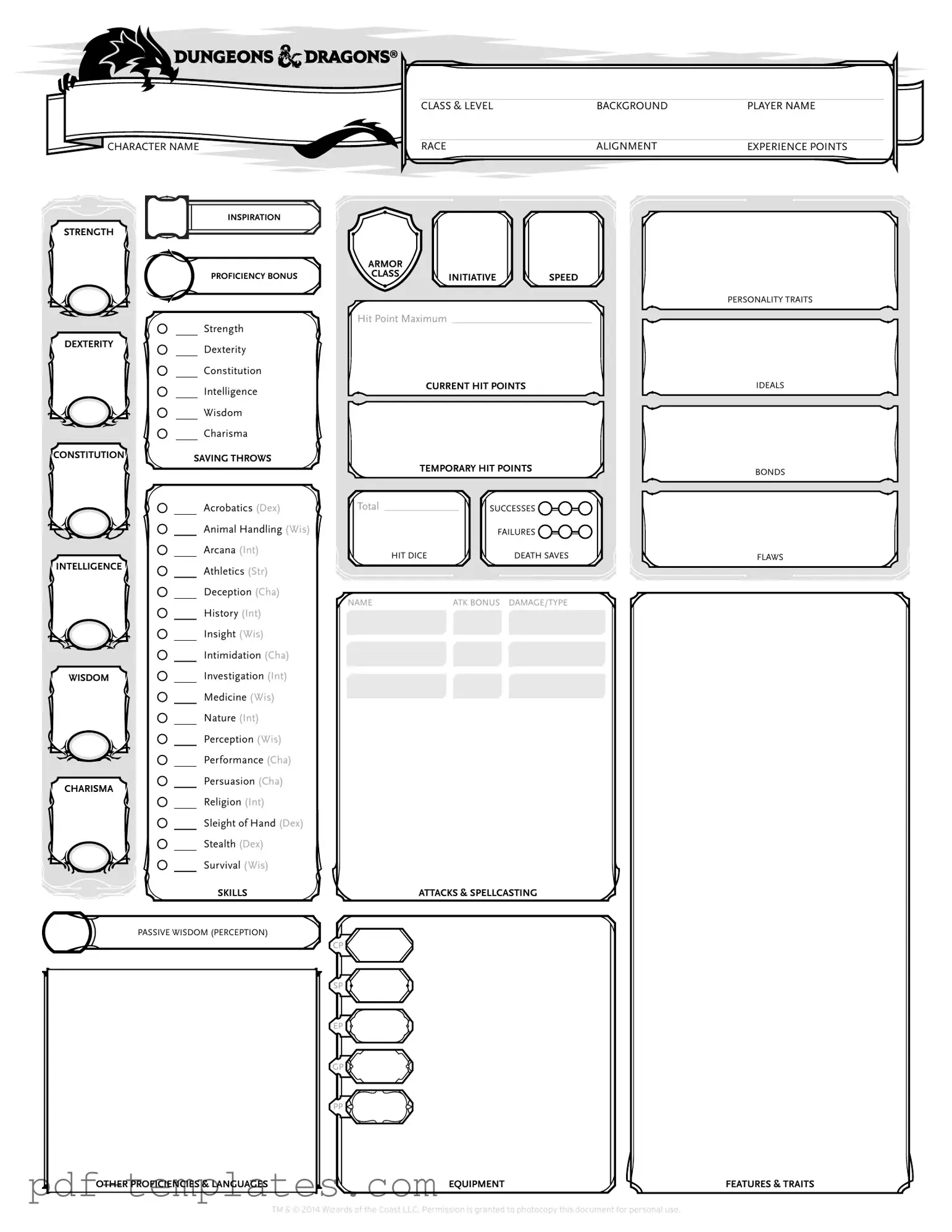The Dungeons & Dragons (D&D) Character Sheet is akin to a role-playing game (RPG) character profile. Both documents serve to encapsulate essential information about a character, including attributes, skills, and background. Just as the D&D Character Sheet outlines a character’s abilities and traits, a typical RPG character profile provides a framework for players to understand their character’s capabilities and narrative. These profiles often include sections for personal history, motivations, and special skills, creating a comprehensive view of the character's role within the game world.
A video game character sheet shares similarities with the D&D Character Sheet. In many video games, players create characters that possess unique skills, levels, and equipment. Much like the D&D sheet, these digital character sheets display vital statistics and abilities. Players can track their character's progress and make strategic decisions based on the information presented, whether in a tabletop format or a digital interface.
The tabletop RPG character journal is another document that resembles the D&D Character Sheet. This journal often includes detailed character development notes, session summaries, and evolving character traits. While the D&D sheet focuses on current stats, the character journal allows for deeper storytelling and personal reflection. Players can chart their character’s journey, adding layers to their role-playing experience.
The character dossier used in live-action role-playing (LARP) also mirrors the D&D Character Sheet. LARP participants create detailed profiles that outline their characters’ backgrounds, skills, and objectives. These dossiers serve as a reference during gameplay, similar to how a D&D sheet provides necessary information for players to engage effectively in their roles.
A board game player sheet can be compared to the D&D Character Sheet as well. Many board games require players to manage resources, abilities, and strategies through a player sheet. This document often includes tracking elements like health points, special abilities, and game-specific statistics. The format is designed to facilitate gameplay, just as the D&D Character Sheet organizes information for easy access during a session.
The character bio in a creative writing context shares a connection with the D&D Character Sheet. Writers often create character bios to flesh out their fictional creations, detailing personality traits, backgrounds, and motivations. While the D&D sheet focuses on gameplay mechanics, both documents aim to provide a comprehensive understanding of a character, aiding in storytelling and character development.
An online role-playing forum profile has similarities to the D&D Character Sheet as well. These profiles typically allow users to create and showcase their characters within an online community. Much like the D&D sheet, they include information about abilities, interests, and backstory. This helps facilitate interaction and collaboration among players in a shared narrative environment.
The character creation form used in tabletop war games also resembles the D&D Character Sheet. Players fill out these forms to define their units, detailing attributes such as strength, armor, and special abilities. Both documents require players to make strategic decisions about their characters, impacting how they perform within the game. The emphasis on character statistics and abilities is a common thread between these forms.
The character sketch used in comic book creation parallels the D&D Character Sheet in its focus on defining a character’s attributes and backstory. Comic book creators often draft sketches that include details about a character’s powers, personality, and history. This sketch serves as a foundation for storytelling, similar to how the D&D Character Sheet supports gameplay by outlining a character's capabilities.
Lastly, a film character breakdown document can be likened to the D&D Character Sheet. In film production, character breakdowns outline key attributes, motivations, and arcs for characters. These documents help actors understand their roles and how to portray their characters effectively. Like the D&D sheet, this breakdown serves as a crucial reference point for character development and interaction within a narrative framework.
